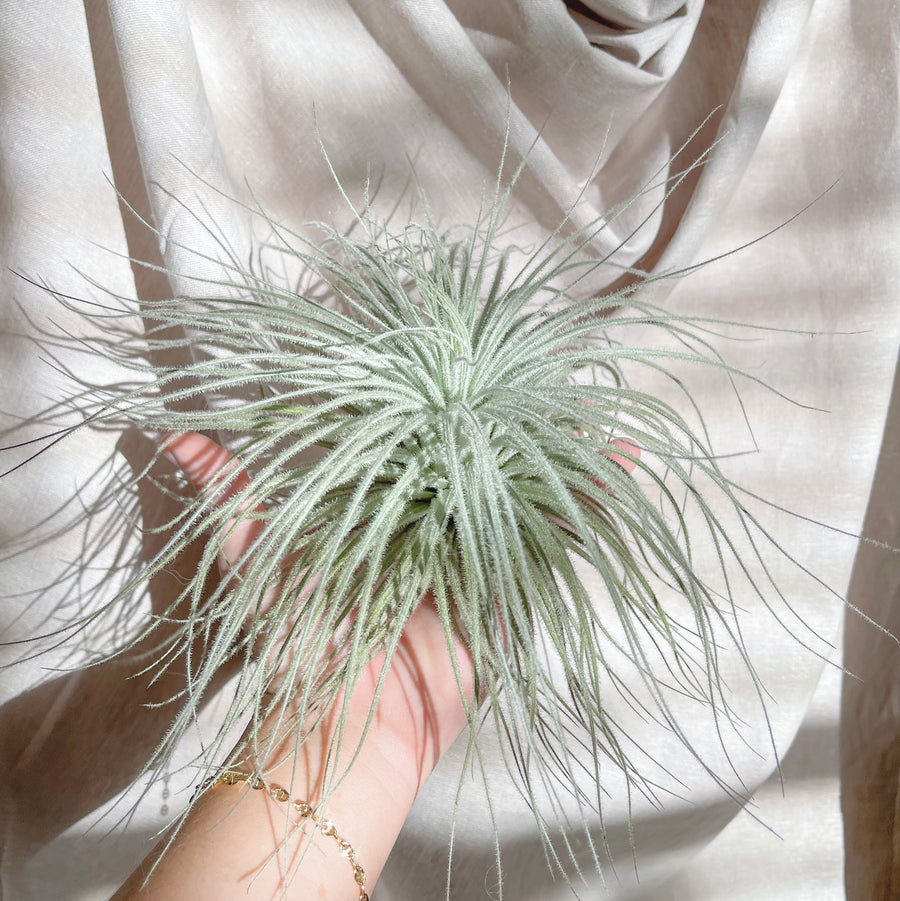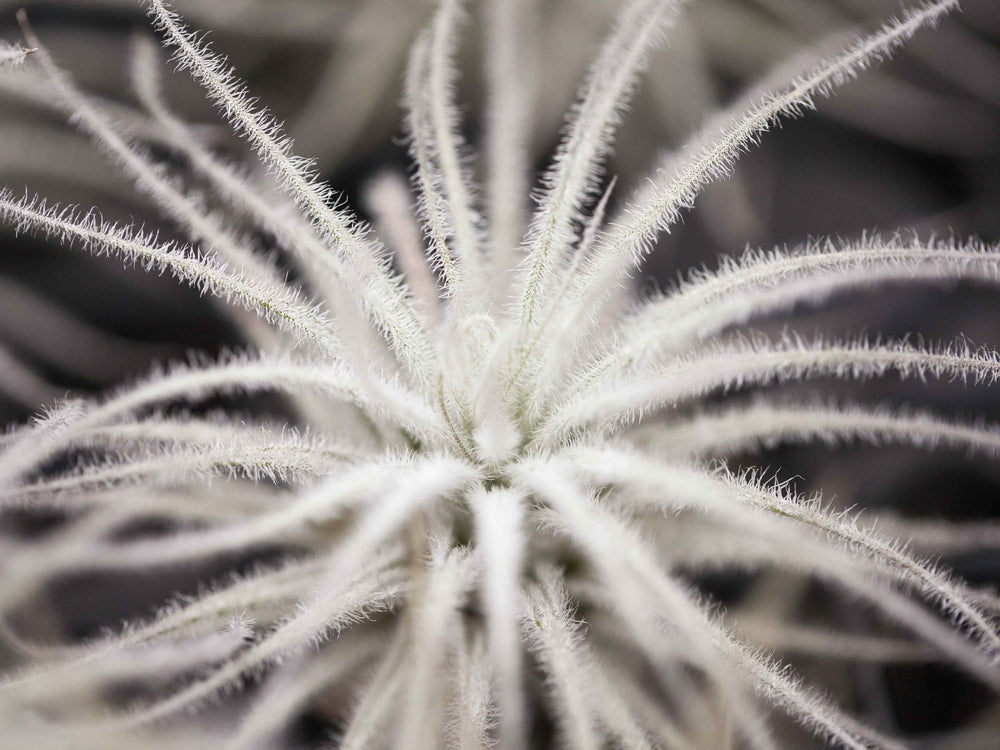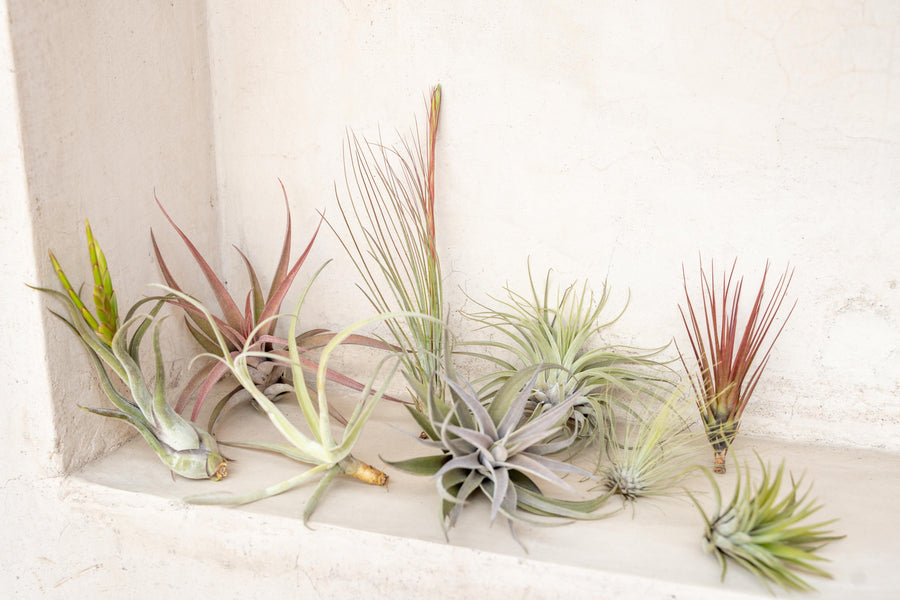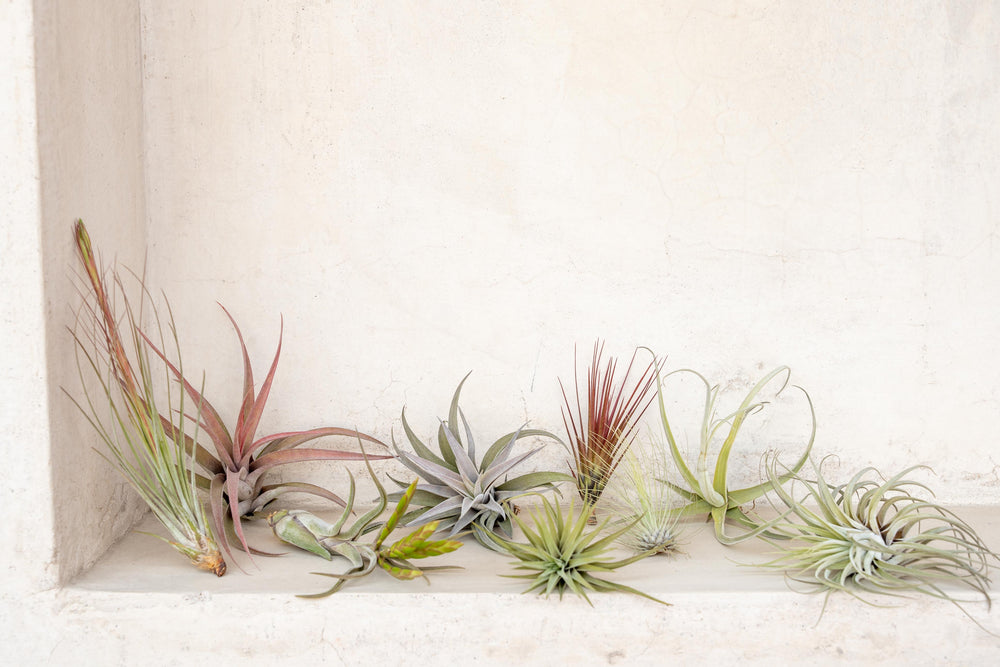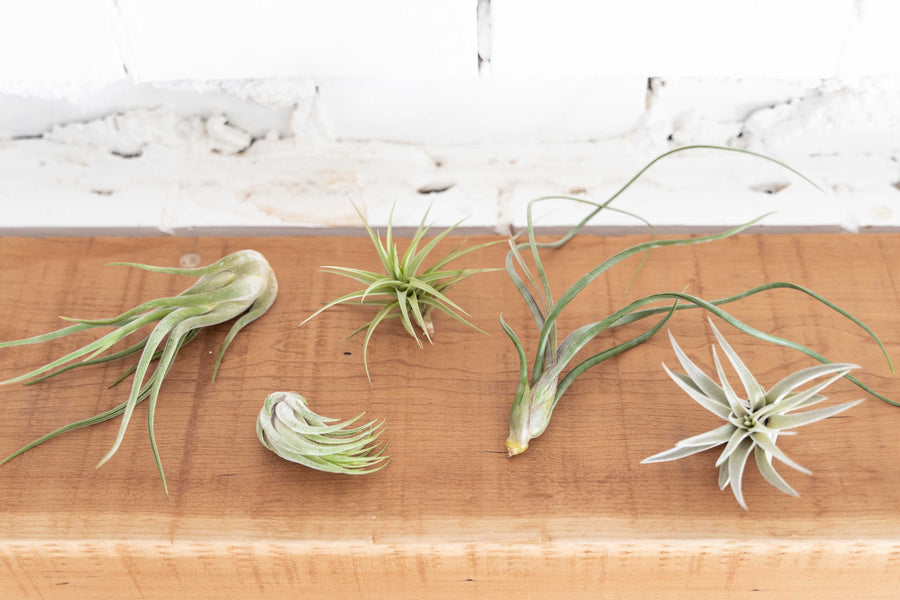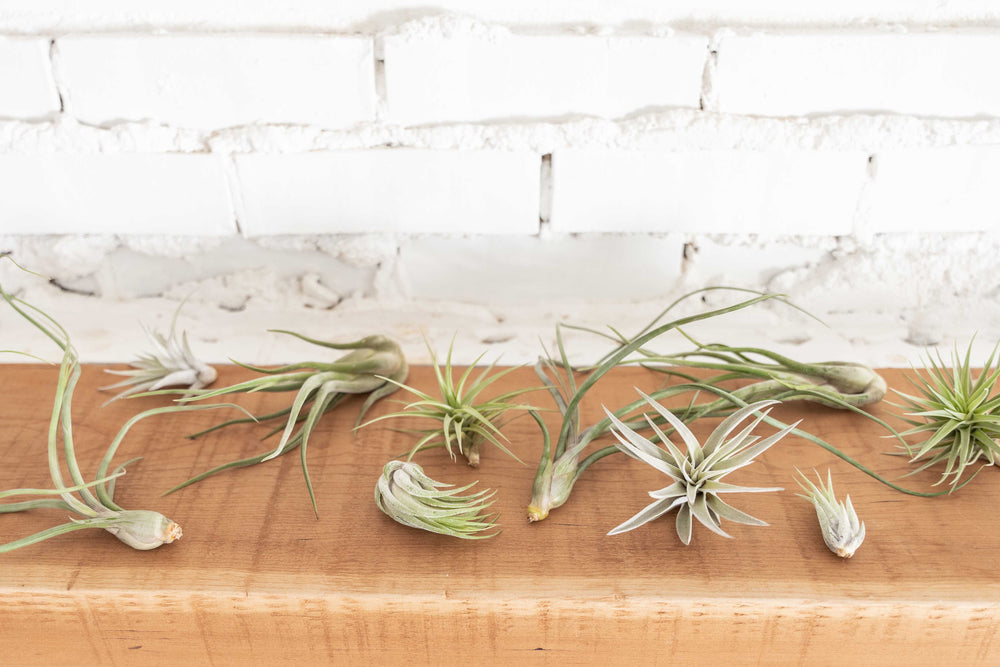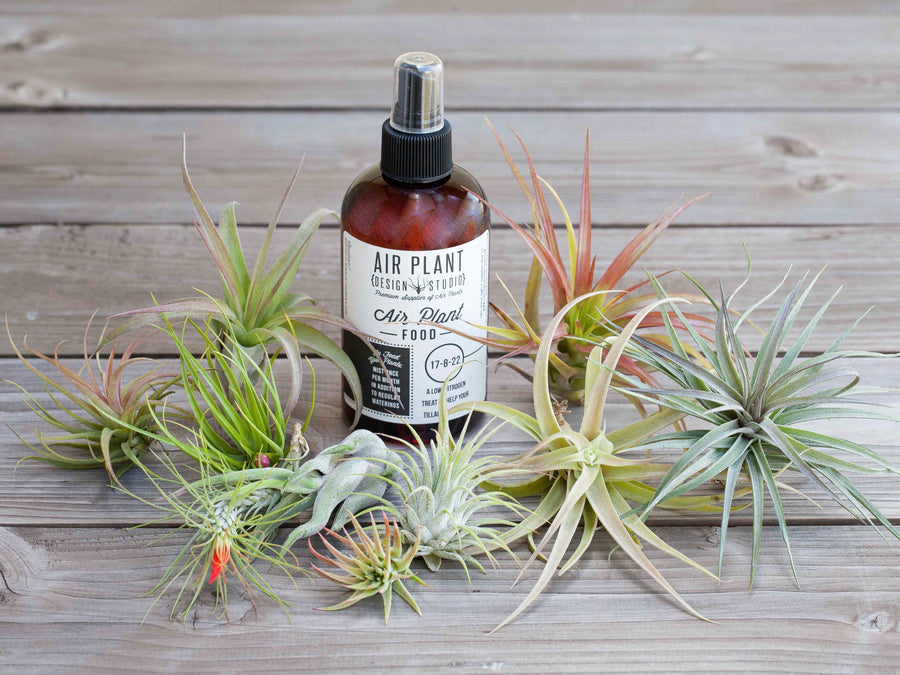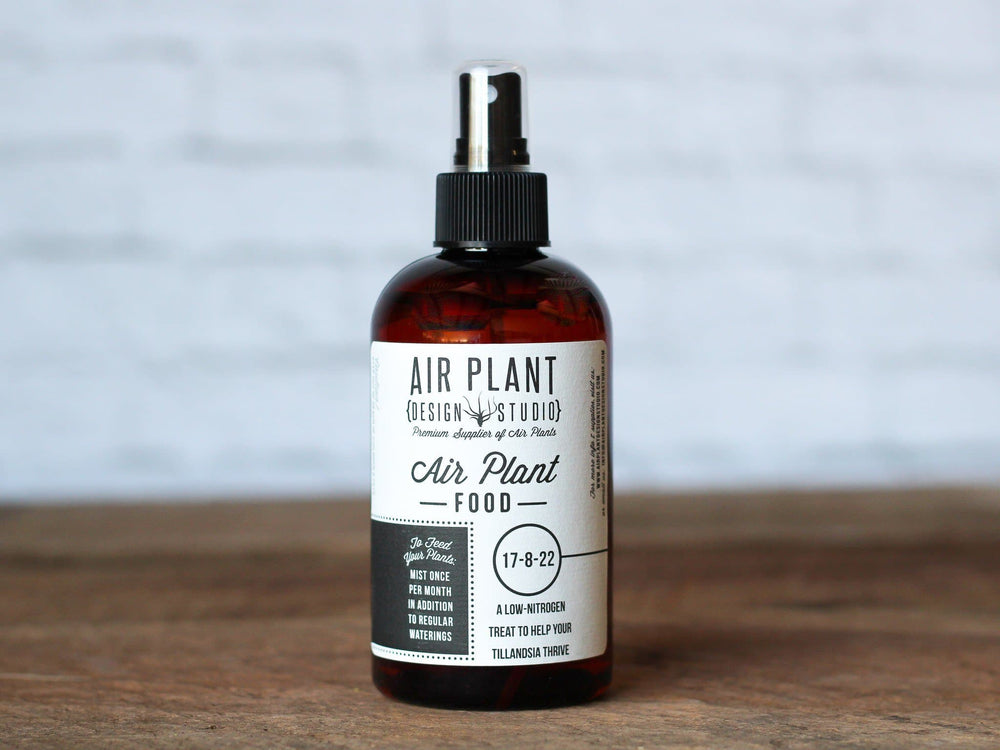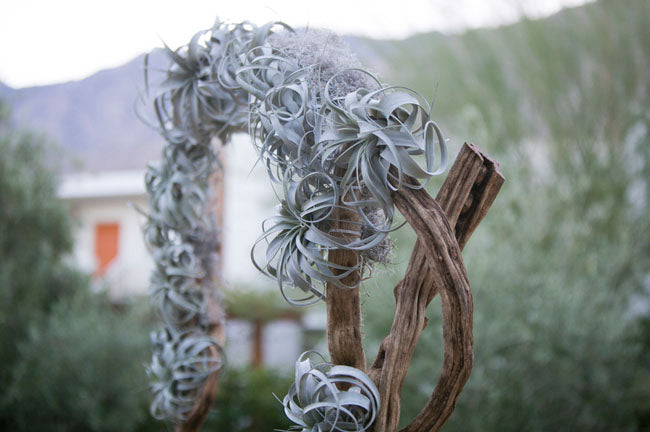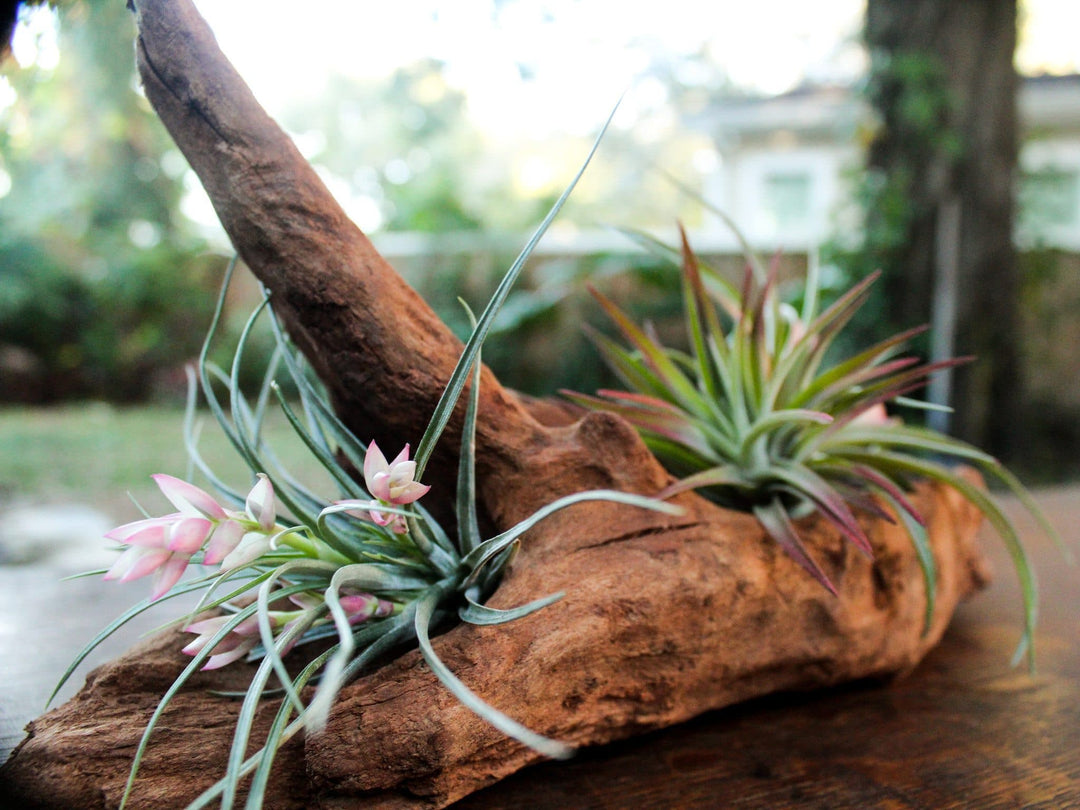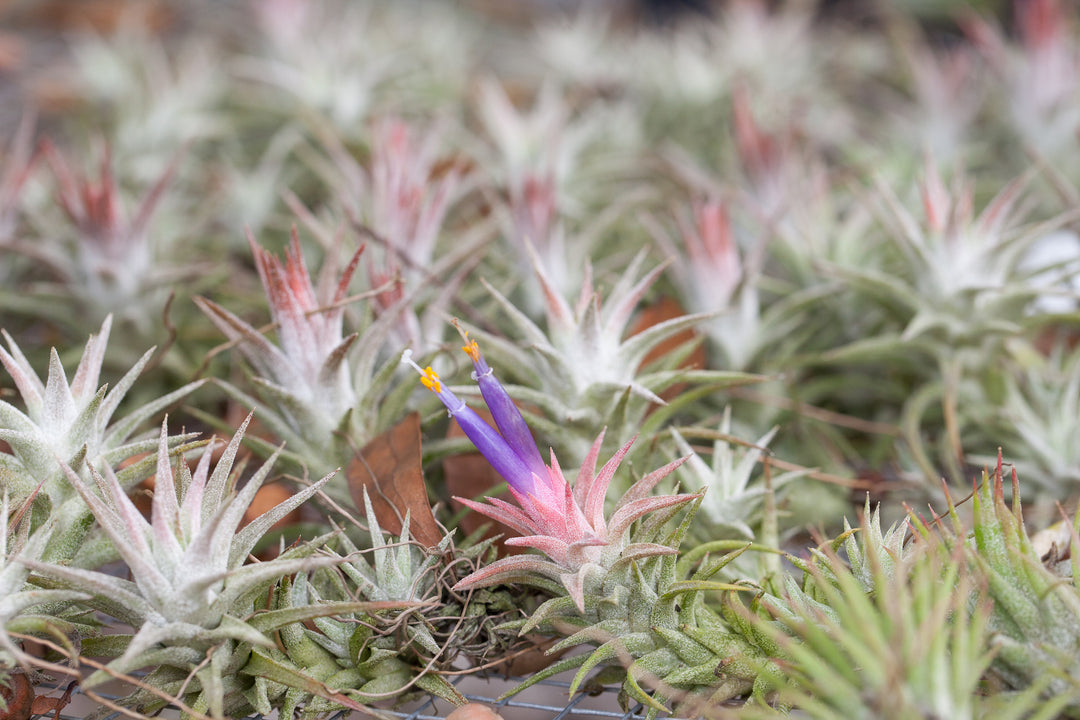All About Trichomes
Air plants, or Tillandsia, are epiphytes, meaning they absorb their nutrients through their leaves instead of through a root system. It is through the trichomes, the fuzzy white hair-like things on their leaves that they take in nutrients from the air and water. Trichomes are what will give some air plants their silver/grey fuzzy appearance, and the amount of trichomes an air plant variety has can dictate a lot about their care.
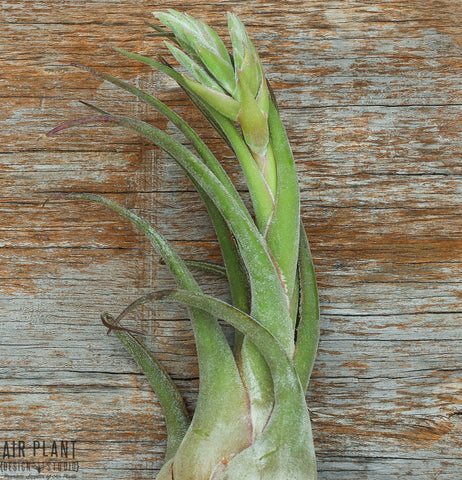
Close-Up of Trichomes on the T. Seleriana Air Plant
How do they work?
Trichomes may look like little hairs but they are actually tiny cups that take in water. Trichomes are made up of a lot of little cells, some that are living and some that are dead. When water comes in contact with the dead cells of a trichome, it swells it like a sponge and is absorbed into the living cells, which then put the water to use.
Trichomes, which are most abundantly found on air plants that are native to desert-like conditions, also serve the purpose of holding water in once it is absorbed. This is why air plants that have an abundance of trichomes are often more drought-tolerant and can even handle brighter light than other tillandsia varieties.
Trichomes on air plants
One of the most vivid example of trichomes on a Tillandsia can be found on the T. Tectorum Ecuador. These fuzzy white air plants get their distinctive “snowball” like look from their many prominent trichomes. Because of their abundant trichomes, the T. Tectorum Ecuador actually prefers mistings to the full soaks we normally recommend for most Tillandsia. They also like more bright light and are one of the few Tillandsia varieties that can handle direct sunlight.
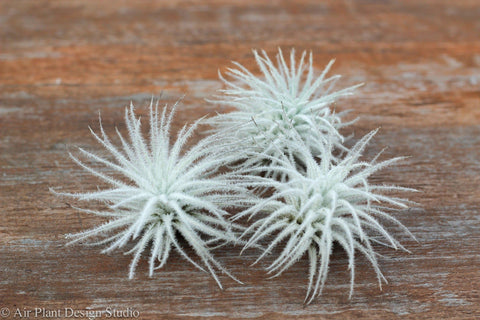
The T. Tectorum Ecuador Air Plants Get Their Fuzzy White Look from Their Abundance of Trichomes
As trichomes are responsible for the silver look of some air plant varieties, and because of this, we recommend that air plants that have more silver-colored leaves get a bit more light, and can also be some of the more hearty plants that can go a little longer without a soak.
For more air plant care and watering tips, visit our Air Plant Care page. Questions? Ask us in the comments below!


